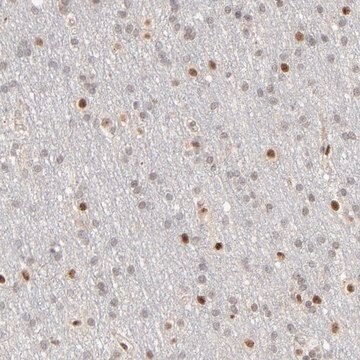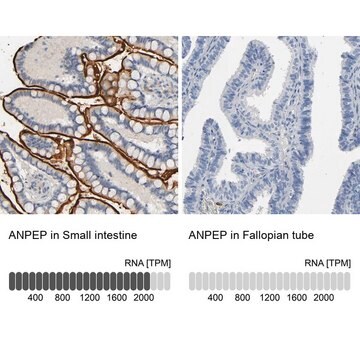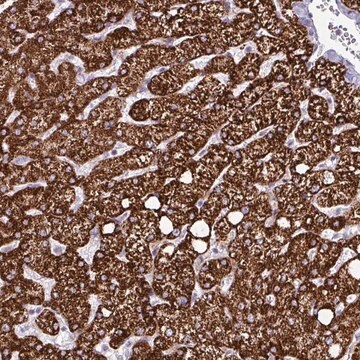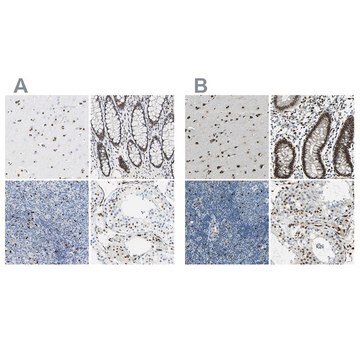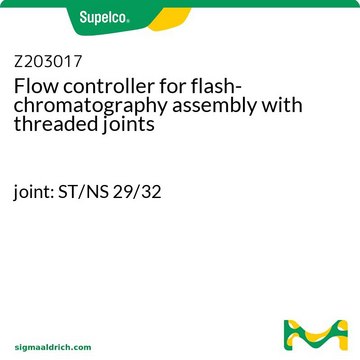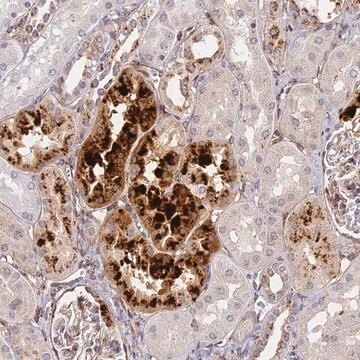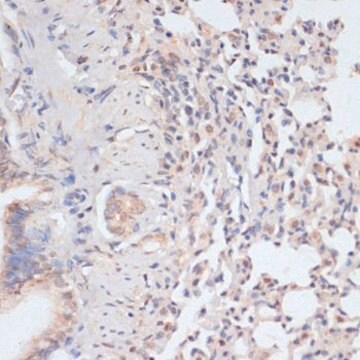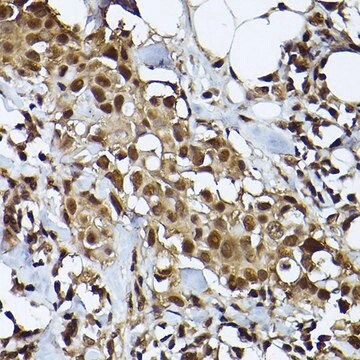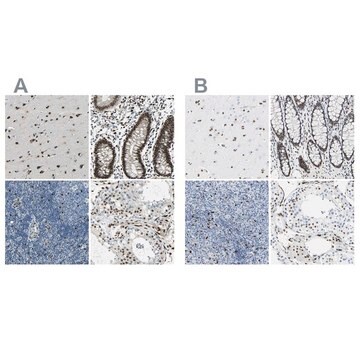HPA051171
Anti-FKBP10 antibody produced in rabbit
Prestige Antibodies® Powered by Atlas Antibodies, affinity isolated antibody, buffered aqueous glycerol solution
동의어(들):
Anti-FK506 binding protein 10, 65 kDa, Anti-FKBP6, Anti-FLJ20683, Anti-FLJ22041, Anti-FLJ23833, Anti-hFKBP65
로그인조직 및 계약 가격 보기
모든 사진(3)
About This Item
추천 제품
생물학적 소스
rabbit
결합
unconjugated
항체 형태
affinity isolated antibody
항체 생산 유형
primary antibodies
클론
polyclonal
제품 라인
Prestige Antibodies® Powered by Atlas Antibodies
양식
buffered aqueous glycerol solution
종 반응성
human
기술
immunofluorescence: 0.25-2 μg/mL
immunohistochemistry: 1:20-1:50
면역원 서열
CSLLDGTQLFTSHDYGAPQEATLGANKVIEGLDTGLQGMCVGERRQLIVPPHLAHGESGARGVPGSAVLLFEVELVSRED
UniProt 수납 번호
배송 상태
wet ice
저장 온도
−20°C
타겟 번역 후 변형
unmodified
유전자 정보
human ... FKBP10(60681)
일반 설명
FK506 binding protein 10 (FKBP10) is expressed in the endoplasmic reticulum. It is a peptidyl-prolyl cis-trans isomerase, with a molecular weight of 65kDa. The gene encoding this protein is localized on human chromosome 17q21.2.
면역원
FK506 binding protein 10, 65 kDa recombinant protein epitope signature tag (PrEST)
애플리케이션
Anti-FKBP10 antibody produced in rabbit has been used in immunohistochemistry.
생화학적/생리학적 작용
FK506 binding protein 10 (FKBP10) is a chaperone protein. It is thought to be a chaperone of type I collagen. Mutations in the FKBP10 gene have been linked to Bruck syndrome, which is characterized by bone fragility and congenital joint contractures.
특징 및 장점
Prestige Antibodies® are highly characterized and extensively validated antibodies with the added benefit of all available characterization data for each target being accessible via the Human Protein Atlas portal linked just below the product name at the top of this page. The uniqueness and low cross-reactivity of the Prestige Antibodies® to other proteins are due to a thorough selection of antigen regions, affinity purification, and stringent selection. Prestige antigen controls are available for every corresponding Prestige Antibody and can be found in the linkage section.
Every Prestige Antibody is tested in the following ways:
Every Prestige Antibody is tested in the following ways:
- IHC tissue array of 44 normal human tissues and 20 of the most common cancer type tissues.
- Protein array of 364 human recombinant protein fragments.
결합
Corresponding Antigen APREST85546
물리적 형태
Solution in phosphate buffered saline, pH 7.2, containing 40% glycerol and 0.02% sodium azide.
법적 정보
Prestige Antibodies is a registered trademark of Merck KGaA, Darmstadt, Germany
면책조항
Unless otherwise stated in our catalog or other company documentation accompanying the product(s), our products are intended for research use only and are not to be used for any other purpose, which includes but is not limited to, unauthorized commercial uses, in vitro diagnostic uses, ex vivo or in vivo therapeutic uses or any type of consumption or application to humans or animals.
적합한 제품을 찾을 수 없으신가요?
당사의 제품 선택기 도구.을(를) 시도해 보세요.
Storage Class Code
10 - Combustible liquids
WGK
WGK 1
Flash Point (°F)
Not applicable
Flash Point (°C)
Not applicable
가장 최신 버전 중 하나를 선택하세요:
Kuskokwim syndrome, a recessive congenital contracture disorder, extends the phenotype of FKBP10 mutations
Aileen M. Barnes
Human Mutation, 34(9), 1279?1288-1279?1288 (2013)
Bruck syndrome - a rare syndrome of bone fragility and joint contracture and novel homozygous FKBP10 mutation.
Moravej H, et. Al
Endokrynologia Polska, 66(2), 170-174 (2015)
Integration of zebrafish fin regeneration genes with expression data of human tumors in silico uncovers potential novel melanoma markers
Martin Hagedorn
Oncotarget, 7(44), 71567?71579-71567?71579 (2016)
Osama H Essawi et al.
European journal of medical genetics, 63(9), 103980-103980 (2020-06-13)
To date 45 autosomal recessive disease-causing variants are reported in the FKBP10 gene. Those variant were found to be associated with Osteogenesis Imperfecta (OI) for which the hallmark phenotype is bone fractuers or Bruck Syndrome (BS) where bone fractures are
Michael C J Quinn et al.
International journal of oncology, 42(3), 912-920 (2013-01-29)
The frequent loss of chromosome 17 in epithelial ovarian carcinomas (EOC), particularly high-grade serous carcinomas (HGSC), has been attributed to the disruption of TP53 (at 17p13.1) and other chromosome 17 genes suspected to play a role in tumour suppressor pathways.
자사의 과학자팀은 생명 과학, 재료 과학, 화학 합성, 크로마토그래피, 분석 및 기타 많은 영역을 포함한 모든 과학 분야에 경험이 있습니다..
고객지원팀으로 연락바랍니다.